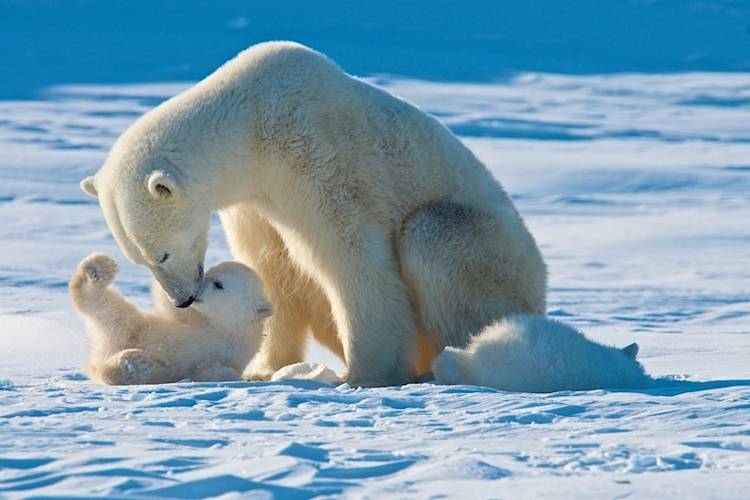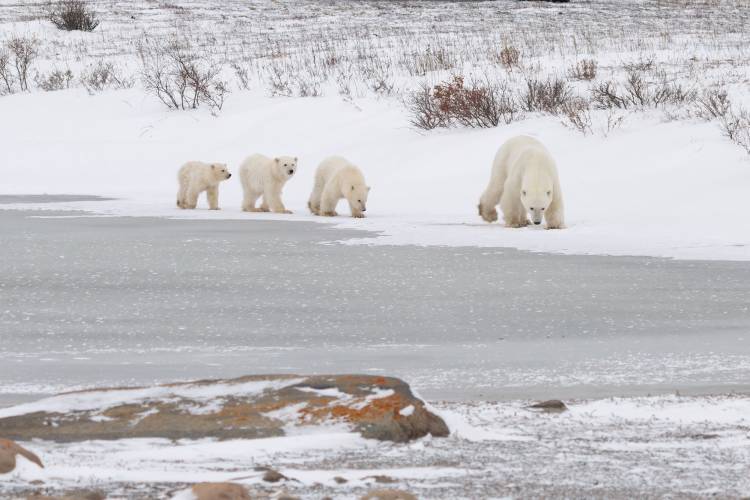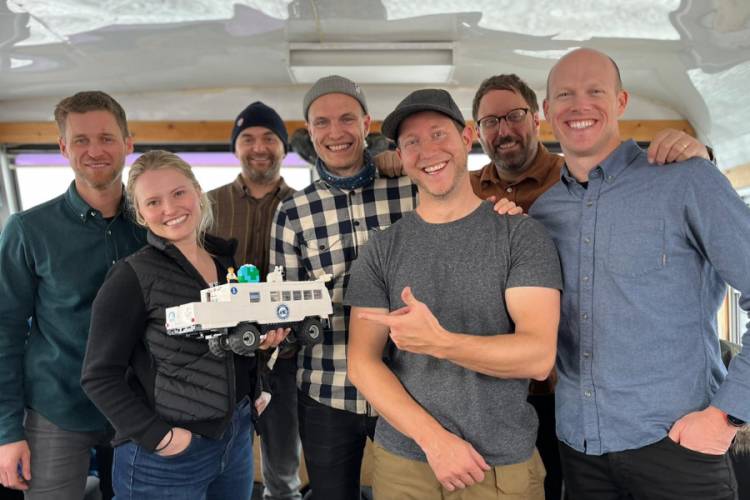We are wrapping up another wild and inspiring field season in Longyearbyen, Svalbard. Each year is unique and challenging, and this one was no different. The weather was really difficult. In 18 days of fieldwork, we only had three days where the weather allowed us to get out into the field—and those days were not “bluebird days” but filled with mixed clouds and wind, providing just enough of a window for us to get out to do the work and return home. We had many days where we got up early, got everything ready, waited for a phone call, and then were not able to go. Doing that day after day gets a bit exhausting, but necessary to get the work done.
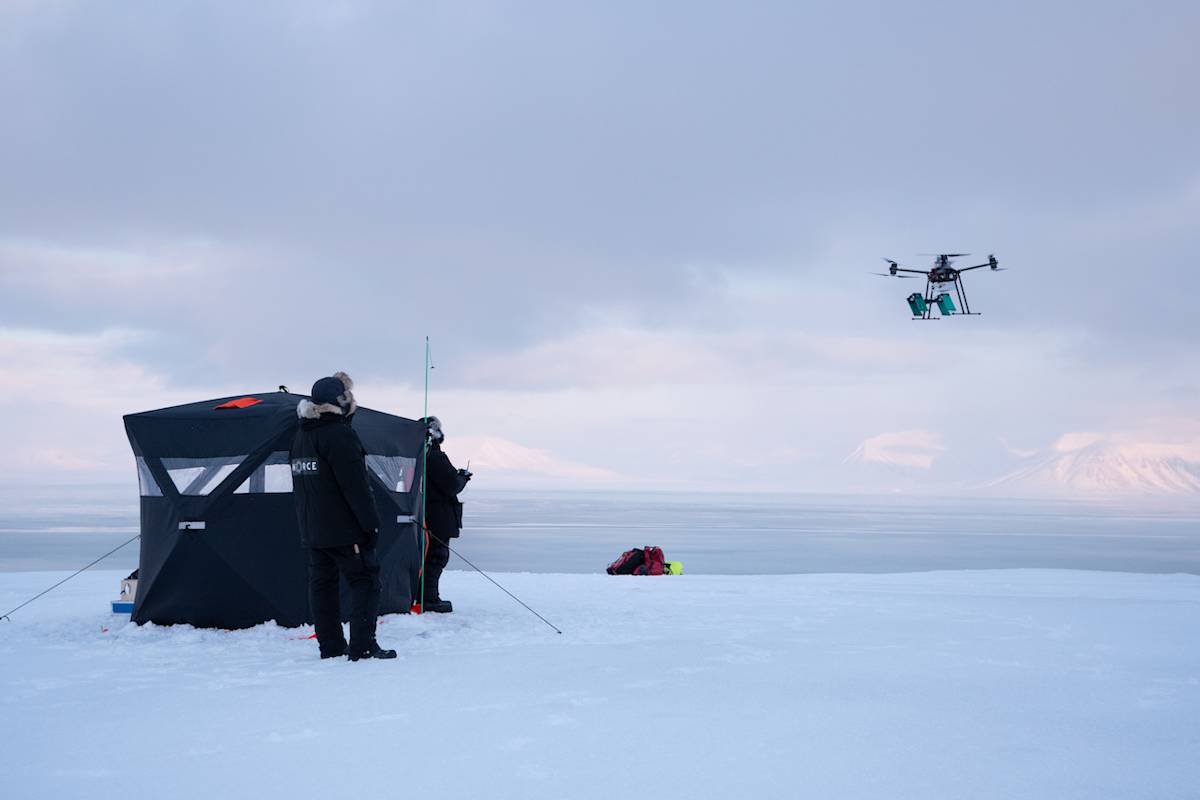
Photo: Kt Miller / Polar Bears International
The NORCE team runs a test with the drone-mounted den detection radar.
Reflections on Svalbard
By Kt Miller, Director of Field Programs and Relations
MINS
14 Mar 2023

Photo: Kt Miller / Polar Bears International
During our three days out we were able to successfully deploy three remote camera systems at polar bear den sites across the archipelago. It’s wild to travel through the vast landscape here and work in such challenging and technical conditions. This year’s den locations were especially tricky. The first two den sites we visited were located in avalanche terrain, which we carefully avoided to manage the risk. At the second location we stepped onto a safe low-angle slope just to the side of the area we were working in and initiated a large collapse, with the snow settling beneath us, making a loud “whump.” It was fine because we were located in a safe spot, but a sign that the steep surrounding slopes were primed for avalanches. At our third den location the terrain was a bit easier to manage. However, winds picked up throughout the deployment, halting additional drone flights, and making working conditions frigid and challenging. We were all swinging our arms and legs to stay warm as we waited for the helicopter to retrieve us.
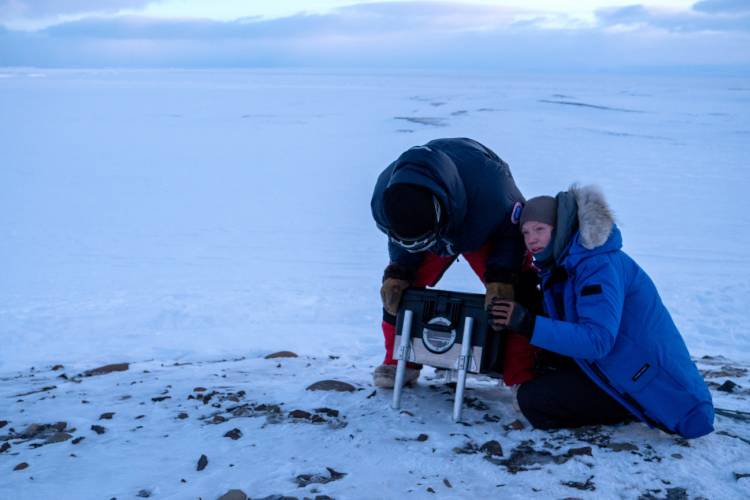
Photo: Kt Miller / Polar Bears International
BJ Kirschhoffer and Joanna Sulich set up a maternal den cam.
We were also able to successfully fly a total of six ultra-wideband radar surveys at three den sites—testing whether they can detect dens under the snow—working with two team members from the research institute, NORCE. They had mostly flown in flat terrain previously so were excited by the challenge of flying and conducting surveys on slopes. It was interesting to listen to them doing math in the field to calculate and plan each “mission” from a safe landing zone to the polar bear site up the slope. Once again, the complexities of the terrain added to the challenge.
This year we were very excited that Dr. Megan Owen of the San Diego Zoo Wildlife Alliance, the research lead on the project, was able to join us in the field, providing invaluable expertise and leadership that helps guide this long-term study. The San Diego Zoo Wildlife Alliance has been instrumental in the development of the Maternal Den Study, guiding the analysis, and helping to develop custom software for the mini den cameras. Our collaboration is another example of how much more we can accomplish when we work together.
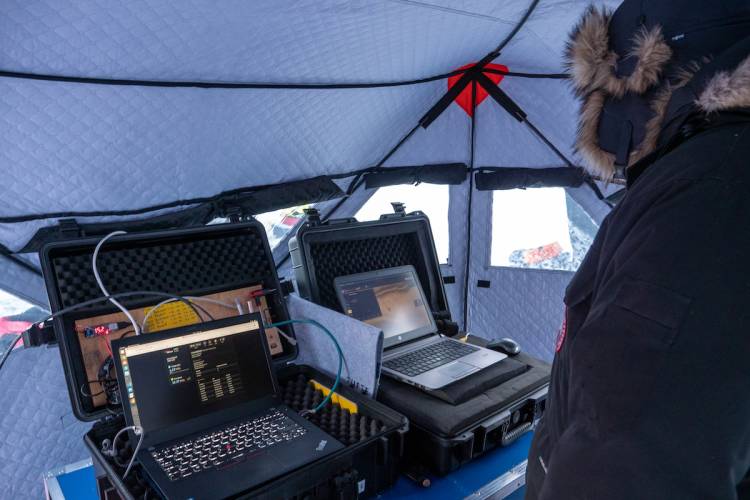
Photo: Kt Miller / Polar Bears International
The NORCE team in the tent serving as the command center.
Camera systems will be collected opportunistically by our partners at the Norwegian Polar Institute in the weeks and months to come. We are so grateful that, due to the amazing amount of research being conducted in Svalbard, other researchers are willing to pick up our equipment when they are in the area, be it weeks or months from now. Once all the systems are collected we will gather the memory cards and pass the data along for analysis.
In addition to the fieldwork, our team hosted a community presentation in Longyearbyen, sharing a bit of polar bear biology and information about our research. We are excited about continuing to grow our work in this region and hope to continue to do so in 2023 and beyond.
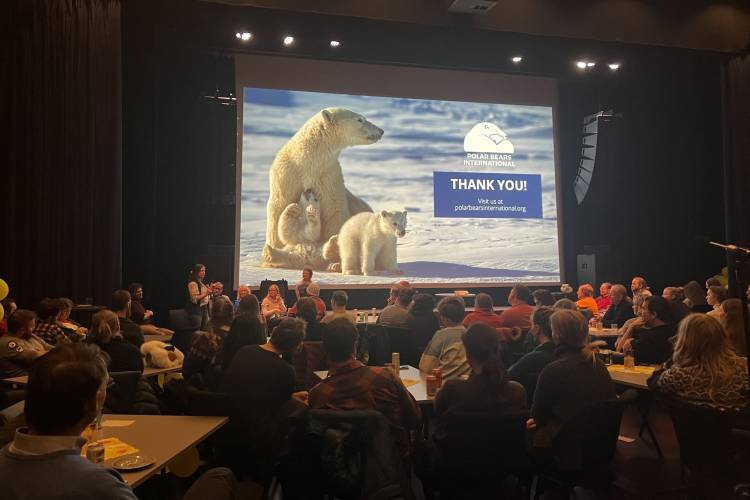
Photo: Erinn Hermsen / Polar Bears International
The community presentation in Longyearbyen.
Huge thanks to our research partners that made this year’s field work a success—the Norwegian Polar Institute, San Diego Zoo Wildlife Alliance, and NORCE. And huge thanks to all of you, our greater community, who support our work and make this research possible. We couldn’t do it without you.



